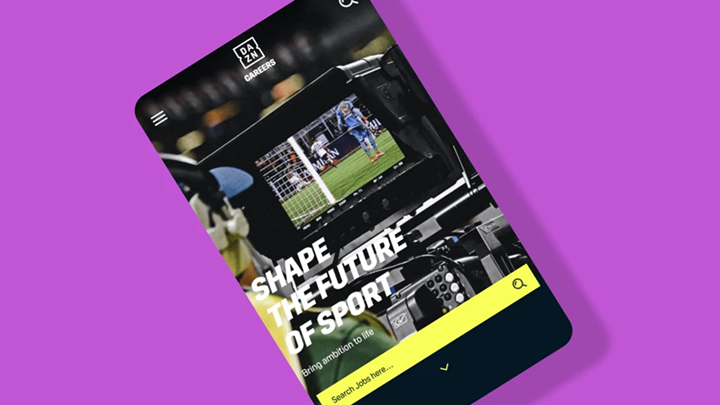#EmployerBrand: Attracting Talent With Social Media
Many companies are using Facebook and Twitter as recruitment channels — but what makes a successful careers feed that converts likes and retweets into new recruits? Understanding how to use social platforms like LinkedIn, Facebook and Twitter to build your employer brand will help you attract more high-quality candidates and get ahead of the curve.
How to Use Social Media for Employer Branding
In today's tech-obsessed world, social media is a great tool for recruitment marketing. Practically everyone is on at least one platform — in January 2022, there were 4.62 billion active social media users worldwide. That's more than half the global population.
Building a social media presence for your Employer Brand, therefore, will help you get your message in front of the right people. Here are some ideas to get you started.
1. Create a Careers Page
Careers pages are ubiquitous on social media, and they're easy to start. They offer a perpetual stream into the phones and tablets of an employer’s target audience, offering the potential for impressions on a regular — or even daily — basis.
With a like or a follow, perhaps even with an alert set up for new content, eager talent can hear about new job opportunities within seconds of the update going live. Alternatively, social media pages offer an insight into what a prospect can expect from a position at your company, discovering elements of the workplace culture that resonate with them.
On the other hand, driving traffic to a careers page requires a cautiously augmented approach, typically with targeted advertisements and carefully-worded job listings on third-party sites. Without incentives in place, many such careers sites are unlikely to encourage repeat visits.
The difficulty lies in knowing what will resonate with the target audience. Should recruitment teams pump out messaging with the funniest content or viral potential, keen to scoop up the most likes and impressions? Or is there more to it?
2. Leverage Compelling Stories
Brian Vigeant, founder of the social media platform Culture HQ — offering TA leaders more tools and customisation than traditional social media — recently spoke to us about the power of storytelling in employer brand messaging and had plenty to say about how employers should approach recruitment marketing and social media.
“If a company has done a lot of the work upfront, including the employee value proposition — the brand pillars, the values, the personas — then from there, it's basically just representing those core things on their platforms.
Vigeant said he likes to think about it in two different ways:
- Teams: What does the brand look like across all its teams? Why would someone join the engineering team versus the sales team or the customer service team? Capturing stories that highlight each team's unique elements can help you provide an accurate glimpse into your company culture.
- Themes: Think of how a candidate would explore a company. Your posts and stories should answer their most pressing questions, such as who you are, what you stand for and what life is like at your organisation. You also need to make sure you're capturing content that's specific to the roles, teams or people you're highlighting rather than relying on a broad view of the company as a whole.
Many of the larger social media pages from major companies successfully strike a balance between themes and teams. BMW Careers on Facebook, with over 400,000 likes and four to five posts per week, displays many of the values that the car manufacturer is keen to be associated with: futuristic thinking, green technologies, intelligent designs. Both within and alongside its job advertisements, BMW represents each of these themes in a number of different ways through product teases, concept art and big smiles at awards ceremonies.
But BMW mixes these themes with insights from its teams, including employee stories and ‘day in the life’ videos that take a deep dive into what each specific role entails, from signing in to signing off. The ambitious overarching themes of technological horizons and a brighter future can certainly help to motivate prospective talent, but it’s in the day-to-day subtleties that prospects can truly begin to understand where they fit into the bigger picture.
3. Pay Attention to Your Competition

According to original research from StandOut CV, 91% of all employers use social media in their recruitment strategies. Chances are high that, unless you're in a super-niche industry, that's where your competitors are, too. Watching how they connect with talent can help you gain an edge in the market.
Here's a simple exercise to generate some ideas. Visit your competitors' social media pages and consider the following questions:
- How often do they post?
- Where are they posting?
- Which types of content get the most engagement?
You can use your observations to tailor your content strategy to your intended audience. Creating a content calendar can help you simplify the planning process and maintain momentum, which is critical for gaining algorithmic exposure.
You should also carefully consider which platforms you want to be active on. The top social media platforms employers use include Facebook, LinkedIn, Twitter, Instagram and now TikTok. Find out which platforms your competitors are most active on and start there.
4. Know When to Chase the Viral Moment
The ‘day in the life’ videos and the charity fun runs on the BMW Careers Facebook page show that there is a place for a lighter side, even amidst the diligent professionalism of a company like BMW. It is a reminder that social media is primarily a medium of enjoyment and, well, procrastination — posts that elicit excitement or humour are more likely to stimulate reactions and drive the post further up the social media algorithm.
Much like careers sites, however, a high volume of impressions is not as important as conversions, especially for high-quality applicants.
While it may be tempting to cast the net as wide as possible and tempt in a large crowd with memes and punchy tweets, chasing the viral moment can lose the essence of what a company is about. Furthermore, prospective employees that apply because of a stilted impression of what the company is about are far more likely to drop out further down the line, costing valuable time and resources to the recruiters.
A careers team on social media may use a range of emojis and even the occasional meme to catch the eye, but these should only form a small part of an intelligent social media presence that fully explores the company’s mission, values and culture.
According to Vigeant, humour and heartfelt moments are two of the most effective ways to get someone's attention. That said, it's important to remember your primary motivator — displaying content that attracts great candidates and keeps them on your page. Transparency and authenticity are key to building a strong talent pipeline.
Build Your Employer Brand With Ph.Creative
When it comes to employer branding on social media, we're your secret weapon. Our Defenders of Happiness can help you develop a strong Employer Brand and Employee Value Proposition (EVP) that's true to your organisation so you can show job-seekers what you're all about.
Are you ready to level up your social media recruitment game? Contact us today to get started.




